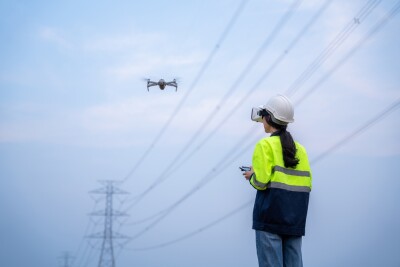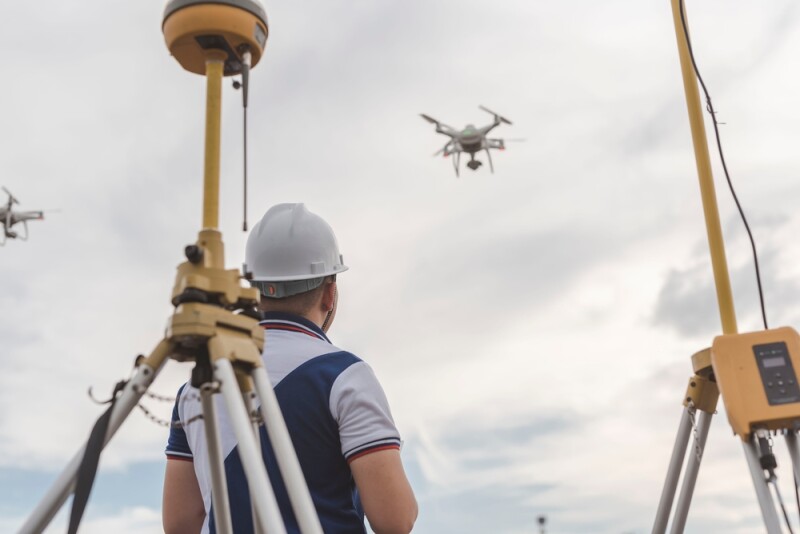The U.S. Geological Survey (USGS) continues to chart a bold course for the future of geospatial data with its National Spatial Data Infrastructure (NSDI) Strategic Plan for 2035. This forward-looking roadmap aims to revolutionize how agencies will collect, manage, and utilize geospatial information across government, industry, and academia over the next decade.
A key component of realizing the NSDI vision includes leveraging advanced technologies, such as drones and advanced sensors, to enhance data gathering and analysis capabilities. As Geo Week draws near, it behooves us all to understand the bigger picture of how our government views the role of geospatial data.
The Background and Process
As the science arm of the Department of Interior, the USGS plays a critical role in providing actionable environmental, resource, and public safety data to decision-makers nationwide. With over 60 science centers in more than 600 locations, the USGS is uniquely positioned to engage stakeholders and drive innovation in geospatial technologies and practices. It houses the Secretariat for the Federal Geographic Data Committee (FGDC), which spearheaded the NSDI initiative. The plan outlines a comprehensive national vision for the NSDI and details its goals and objectives for sustainable growth.
The USGS and FGDC employed an extensive outreach process to develop this strategic vision. They engaged over 1,000 stakeholders from state, local, tribal, and territorial governments, academia, nonprofits, and industry for input. This inclusive approach helped to ensure the plan addressed the needs and perspectives of the broader geospatial community.
Plan architects also sought to align with existing international geospatial frameworks, including the United Nations Integrated Geospatial Information Framework, which over 90 other countries have previously adopted.
They also sought public input on the proposed NSDI Strategic Plan, with the comment period having closed in early August 2024. Following this public comment period, the FGDC Steering Committee is set to review and potentially adopt a revised version of the plan this fall, which will incorporate the feedback received during the public consultation process.
Key Goals of the 2035 NSDI Strategic Plan
The 2035 NSDI Strategic Plan represents a significant departure from previous iterations, with an increased emphasis on collaboration, partnerships, and leveraging emerging technologies to create an ecosystem for actionable geospatial insights. The plan is built around three core goals: collaborative governance, modernized data and technology infrastructure, and a skilled and inclusive geospatial workforce.
As one of its top priorities, the NSDI Strategic Plan aims to create a nationwide collaborative governance structure that brings together stakeholders from federal, state, local, tribal, and territorial governments, as well as the private sector and academia. This inclusive approach aims to break down silos and foster greater coordination in geospatial activities.
The plan calls for significant investments to modernize geospatial data infrastructure, including: leveraging artificial intelligence and machine learning to enhance data usability, quality, accessibility and interoperability; maintaining and expanding national dataset; adopting common standards to improve interoperability and integrating with global spatial data infrastructures.
Last, but certainly not least, the plan recognizes that people are at the heart of any successful initiative and thus emphasizes developing a skilled, diverse, and inclusive geospatial workforce to support NSDI goals now and in the future.
National Priorities, Challenges and Opportunities
The 2035 NSDI Strategic Plan focuses on leveraging geospatial capabilities to address pressing national challenges, including disaster response and management, public health, infrastructure development and maintenance, and climate change mitigation and adaptation. By providing authoritative, interoperable geospatial data and tools, the NSDI aims to empower decision-makers with the insights needed to tackle these complex issues.
While it lays out an ambitious vision, several key challenges and opportunities will shape its implementation. Among these, a lack of funding and constrained resources, particularly at the local level, may present a major hurdle to its implementation. At the recent GeoGov Summit, Christine Stinchcomb, the Commercial/GIS Division Manager at Georgia’s Cobb County Board of Tax Assessors lamented, “Our funding does not allow us to have those technical skilled folks in our office. They have to be shared among many offices and are spread too thin.” She continued, “We get them out of college, we train then and they leave.”
Other Summit experts noted that many stakeholders lack awareness of the NSDI, particularly at the local level. As a result, education about the significant return on investment that geospatial data and actionable insights bring to communities must remain ongoing. Sarah Hodgetts, the Director of the United Kingdom’s Geospatial Commission DSIT, noted one example she often uses with her constituents: “Geospatial data gets ambulances to a medical emergency faster.”
Articulating the concrete benefits and value proposition of NSDI initiatives will be crucial to securing ongoing support and engagement, especially at the local government level.
Adopting common data standards and ensuring interoperability across systems remains another challenge, particularly given the decentralized nature of geospatial data production in the U.S. and worldwide. Eric Loubier, the Director General of Natural Resources Canada at the Canada Centre for Mapping and Earth Observation highlighted the issue.
“Knowing who has what, who does what is a challenge,” he said. “Right now, we rely on goodwill and collaboration.”
Establishing clear processes for data creation, management and sharing across jurisdictions remains a key global priority.

Finally, emerging technologies such as artificial intelligence, cloud computing, and drones offer immense potential to enhance geospatial capabilities, but also require new skills and approaches. Addressing the geospatial technology skills gap through training, education, and recruitment initiatives lies at the heart of making the plan’s vision a reality. The U.S. Census Bureau, for example, just announced plans to hire 15 new entry-level geographers to support NSDI goals.
The Role of Drones
Drones equipped with high-resolution cameras, lidar, and multispectral sensors will play a crucial role in achieving NSDI goals. By enabling rapid, cost-effective, and high-precision mapping and monitoring of large areas, these systems will collect the detailed imagery and 3D data needed to update national datasets, assess infrastructure, monitor environmental changes, and support disaster response efforts.
With regard to the environment, for example, advanced sensor technologies integrated with drones and ground-based systems will allow for real-time data collection on air and water quality, soil conditions, vegetation health and other environmental parameters.
This wealth of geospatial data will be seamlessly integrated into the NSDI to provide decision-makers with timely, actionable insights for addressing national priorities like climate change adaptation, natural resource management and public safety.
By harnessing these emerging technologies, the USGS and its partners can modernize geospatial data infrastructure, improve data quality and accessibility, and ultimately empower more informed decision-making across sectors to tackle the pressing challenges our nation faces.
The Path Forward
As the USGS finalizes and begins implementing the 2035 NSDI Strategic Plan, the agency remains poised to lead a transformation in how America collects, manages, and utilizes geospatial information. By fostering collaboration, embracing emerging technologies, and focusing on delivering actionable insights, the NSDI aims to play a pivotal role in addressing national priorities and improving decision-making across sectors.
The success of these lofty goals will depend on sustained engagement and commitment from stakeholders at all levels. With its emphasis on collaboration, innovation and delivering practical value, the 2035 NSDI Strategic Plan represents a significant step towards realizing the full potential of geospatial information in service of the nation. As implementation begins, we will keep one eye trained on the USGS and its partners to finalize the NSDI plan, while we keep the other looking up at skies, at the drones collecting the data that will help to turn that plan into reality.

